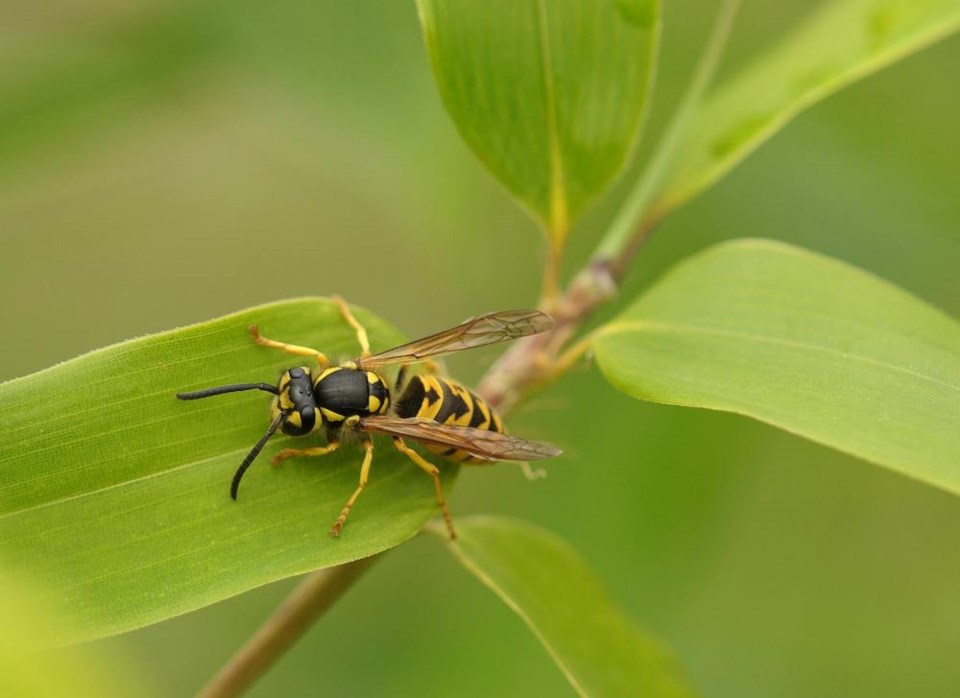LAKELAND - The temperatures have cooled, and some rain has fallen, but the “sting” of the most recent hot-days of summer has not settled down for many area residents – unless they used calamine lotion and some lemon juice.
Wasps – and more precisely, their stingers – made an impact across the Lakeland over the last few weeks, leaving many residents with welts – and questions about where the swarms came from.
The reason for this proliferation of wasps, says Felix Sperling, a professor in University of Alberta’s (U of A) faculty of biological sciences, is due to recent weather patterns, including the hot and dry conditions that were been prevalent through mid-summer.
It’s a balancing act in nature, he explained, noting that in some cooler years, frost and rainfall in the later weeks of summer can slow down wasps as they try to build nests. Weather that brings extremely hot, drought-like conditions with no precipitation can have a detrimental on the growth of these insects. But when the temperatures are just right – with just the right amount of moisture and heat coming at just the right times.
“They were able to multiply as we all know insects can multiply, which is just very prolifically,” Sperling told Lakeland This Week.
While these wasps were a nuisance for a couple of weeks, with the onset of cooler temperatures, the infestation has lost much of its sting, Sperling explained. The worst of the wave, he added, occurred around the end of August and start of September.
Wasps, Sperling said, can pose a potential danger to the public, particularly if an individual who has been stung has an allergic reaction. But for the most part, he said, the effects are short-term with swelling and a localized burning sensation lasting for only a few hours.
While Sperling couldn’t say for certain how bad the wasp swarms were in the Lakeland region, he did say that they were prolific across Alberta due to the warmer-than-usual temperatures across the province.
Pest control
One indicator that wasp populations were on the rise across the Lakeland comes from the people paid to get rid of them. Business was buzzing for pest control companies this year.
Braydyn Shannon of Bonnyville-based Bulwark Solutions told Lakeland This Week on Sept. 10 that the business over the past month or so saw a steady volume of calls from residents eager to wipe out their wasps.
“Probably 40, 50 maybe,” he said of the call numbers.
Shannon said most of these calls typically involve wasps’ nests in trees. Nests, he explained, are sprayed before being removed.
Cooler means slower
Back at the U of A, professor Sperling says the cooler temperatures heading into autumn will slow down the wasps to a level that they will no longer be able to fly. As the temperatures drop, he said, so do the wasps.
“It slows them down (and) it just plain kills them,” he said.
But not all the wasps die during the cold months, like the pest-control experts are finding out, more and more of the queens – the ones carrying the eggs for next summer’s swarms – are finding new hiding places to keep warm.
Norman Campbell, the owner of Bug-E Exterminator in Lac La Biche, said while he hasn’t been inundated with calls from residents about nests, he has seen an increase in calls about the insects finding other places to call home.
Instead of merely removing nests, many of the calls that Campbell has received have resulted in his company spraying chemicals into cracks and concrete foundations of homes, where he says these insects have increasingly taken up residence.
“It’s a different ballgame this year,” said Campbell. “Most of the time we’re removing nests… now they’re coming out cracks this year, or in decks where you can’t get at them or whatever… concrete basements… cement blocks… brick walls.”



